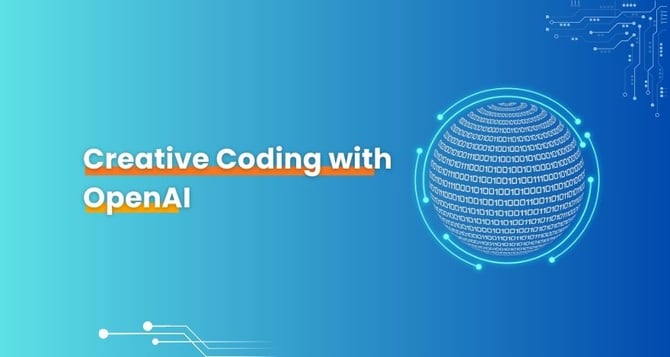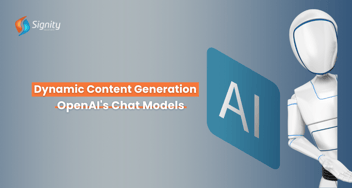Creative Coding with OpenAI: Generating Art and Music
Explore the limitless creativity of OpenAI's GPT-3 in art and music. Learn practical Python examples to generate innovative artworks and compositions, pushing the boundaries of artistic expression.

Art and music have long been the domains of human creativity. However, with the advancement of artificial intelligence, particularly models like OpenAI's GPT-3, the boundaries of creative coding are expanding. In this article, we'll explore the fascinating realm of creative coding with OpenAI, diving into practical examples using Python to generate art and music that push the boundaries of what's possible.
Unleashing Creative Potential with AI
OpenAI's GPT-3 is a versatile language model engineered for natural language understanding, and its potential transcends mere text generation. In the realm of creative coding, GPT-3 can prove to be a valuable asset for artists and musicians alike. With the expertise of skilled ChatGPT developers, this model can interpret and expand upon creative prompts, aiding in the generation of innovative art and music compositions.
Ready to Unleash Your Creativity?
Dive into the world of creative coding with OpenAI. Start your journey to generate stunning art and music now!
Generating Art with GPT-3
Let's explore how to create art using GPT-3 in Python:
1. Set Up OpenAI API
Begin by setting up your OpenAI API credentials:
2. Generate Art Descriptions
To generate art, you can provide GPT-3 with textual descriptions or prompts:
3. Example Art Generation
Now, you can generate art by providing textual descriptions:
4. Creative Prompts
Experiment with creative prompts to guide GPT-3's art generation. You can specify the style, colors, or emotions you want in the art.
Generating Music with GPT-3
Creating music with GPT-3 is a similar process:
1. Set Up OpenAI API
Use the same API setup as before.
2. Generate Music Descriptions
Define a function to generate music based on descriptions:
3. Example Music Generation
Generate music by providing descriptions:
4. Creative Music Prompts
Experiment with prompts to guide GPT-3's music composition. Specify instruments, moods, or genres to explore a wide range of musical possibilities.
Considerations and Best Practices
1. API Costs: Keep in mind that using the OpenAI API has associated costs. Monitor your usage and implement caching for repetitive requests to control expenses.
2. Output Length: Ensure that the generated art and music do not exceed the token limits of GPT-3. You may need to truncate or adjust the content accordingly.
3. Fine-Tuning: Fine-tuning GPT-3 for specific art or music styles may be necessary for more refined results.
4. Legal and Copyright Issues: Be cautious when using AI-generated content for commercial purposes, as it may raise legal and copyright concerns.
5. Feedback Loop: Iterate and experiment with different prompts to refine the creative output. The quality of the generated art and music can improve with fine-tuning.
Pushing Creative Boundaries
Creative coding with OpenAI's GPT-3 opens up exciting possibilities for generating art and music. By providing creative prompts and interpreting AI-generated responses, you can push the boundaries of what's possible in the realms of artistic expression and musical composition. Whether you're an artist seeking inspiration or a musician exploring new compositions, AI can be a valuable collaborator in your creative journey.
Ready to Revolutionize Interactions with ChatGPT?
Ready for Expert Development, Seamless Integration, and Unparalleled Engagement? Your Conversation Transformation Starts Here!
Signity Solutions, with its expertise in AI integration and creative technology, enhances this collaboration, ensuring seamless implementation and innovative outcomes for your artistic endeavors.













